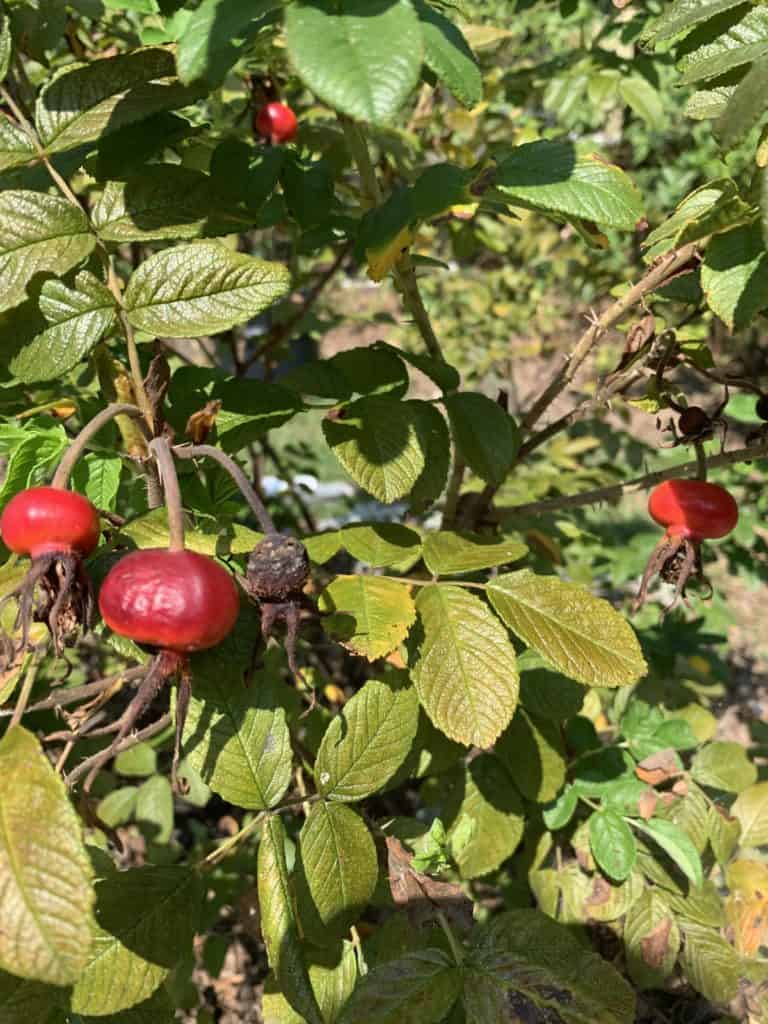Gardening for Health

The Healthy Benefits of Rosehips
By Maria Price
A rose is a rose, and we cherish it for its flower. Too many of us ignore its fruit, however. Blooming roses, especially the old fashioned varieties promise rose hips, the delicate, sweet, potent fruit of the rose.
Not all roses have hips. Those that do leave a brown calyx attached to the base of the fruit that bulges green and growing, through the summer. A rainy start to a growing season encouraged the formation of a lot of hips, more than I’ve seen in several years.
Red or orange rose hips are ripe. They detach easily from the stalk, and many feel as fleshy as any other fruit. You can even take a bite out of the edge of a large rosehip, avoiding the seeds in the middle. You’ll taste the sweet acidic flavor of the fruit. That acidity comes from ascorbic acid also known as vitamin C. Rosehips contain 2000 milligrams of vitamin C per 100 grams of fruit. If they are exposed to heat, such as in cooking, their vitamin content decreases but enough remains to boost your vitamin C intake.
You can add rosehips to herbal or black teas or make jam, jelly or syrup with them. If you want to preserve as much of the vitamin content as possible, try making infused rosehip vinegar with the raw fruit. When you cut the rosehip open, you will find a seedy, hairy core. Remove the hairy seeds before eating or adding to tea. Rosehips can be used fresh or dried for later use.
Rosehips syrups and jellies are a special treat. My favorite rosehips are from Rosa rugosas, the species that is frequently planted on beachfront properties because it is salt tolerant. For wild foraging, the invasive Rosa multiflora also makes small hips but quite edible. They are usually orange and later in the fall. If you find a lot of these, at least you’ll slow down the spread of a highly invasive plant.
To make rosehip jelly, collect 4 cups of rosehips, either wild or from the garden. Wash them and crush them lightly with a rolling pin. Cover the hips with water in a stainless steel pan and bring to a boil. Remove from heat, cover and let stand until cool. Strain through a sieve lined with cheesecloth or an old fashioned perforated cone where you push the pulp through the holes with a wooden pestle. Measure 3 cups of the infusion into the rinsed out large pan and bring to a boil. Add a box of powdered pectin and bring to a boil again, stirring. Add 3¾ cups of sugar, stirring constantly; boil hard for 2 minutes exactly. Pour into sterile jelly glasses and seal. Makes about four half pint jars.
